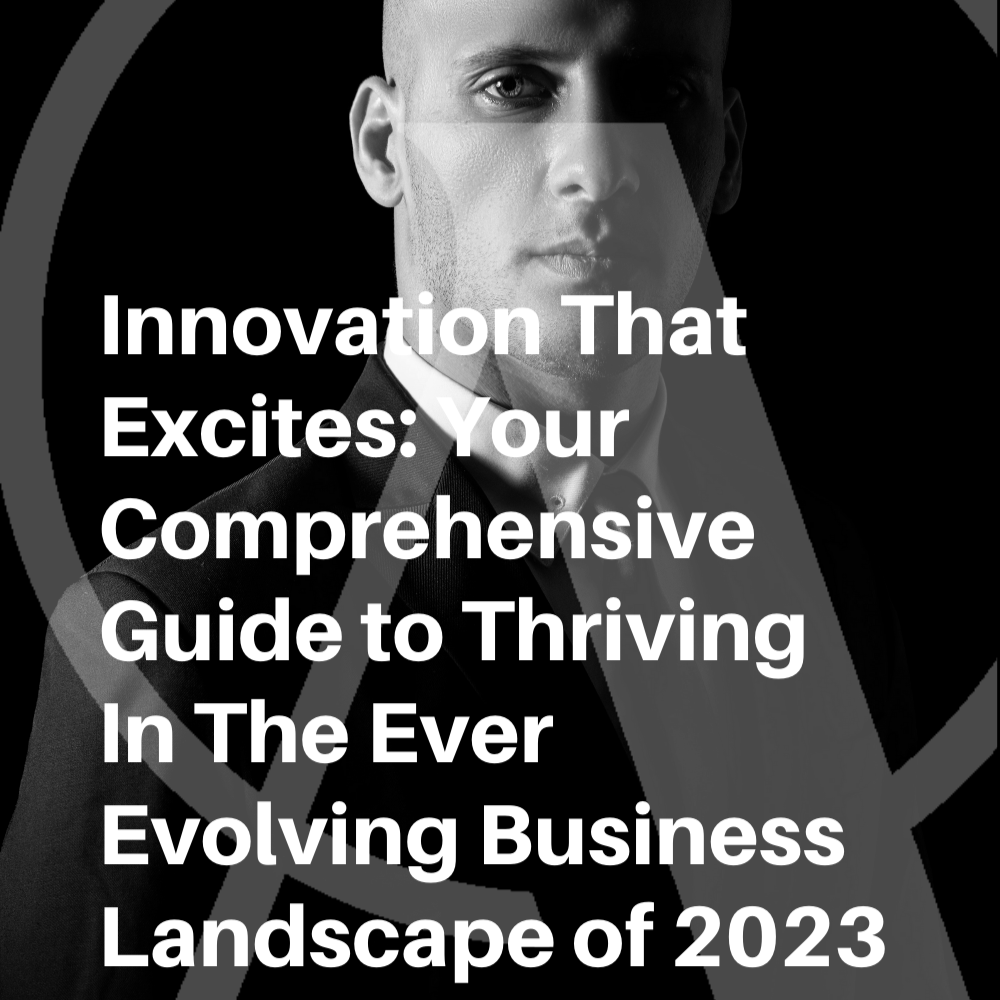You may have heard “intent based networking” in a different context, but I...



You may have heard “intent based networking” in a different context, but I...

In the rapidly evolving business landscape of 2023, innovation that excites is...
This naturally begs the question, how does one stay competitive in today’s business landscape? How do you create an edge as a business leader, so you can accomplish both your personal and professional goals?
Your competitive advantage rests in 3 pillars of business practice: strategic networking, trend analysis and innovation. Let’s break this down one by one:
Networking as we know it is broken. It’s a pitch fest that leaves most driven, intentional leaders feeling transactional and slimy. But, the quality of your network, your inner circle directly correlates to the quality of your conversations, ideas, and ability to make BIG things happen.
Now we must see networking skills as a means of surrounding yourself with a diverse community of high impact, high achievers who can serve as a massive catalyst for your own personal success. Putting yourself in the room where new ideas are not only being shared, but analyzed and refined, will help you dramatically increase your own ability to think outside of the box.
Hearing from others with different areas of expertise, training, and experience will help you think of new and innovative ways to solve problems in your own industry, by applying practices and principles in other industries.
Intentionally building a network with a wide range of leaders, means having people to call when you need a resource, connection, technical analysis, or door opened for your new innovations. This entire process for anyone in a leadership role is seeming to evolve into a much more intimate level of personal networking as opposed to what we have seen work before.
Of course, in order to truly reap any benefit from a strategic network and operational networking, you have to be willing to get in the right rooms (which can often mean investing a long period of time and money), helping others accomplish their own goals, and committing to adding value through sharing your own thoughts, ideas, resources and connections.
Most people wrongly assume that innovation requires coming up with brand new, never been done before ideas. In fact, real innovation usually comes from synthesizing already existing ideas and applying them in a new context.
One of the most famous applications of synthesizing ideas is how Netflix was built, operated, and guided from one line of business to a brand new platform entirely. Mail subscriptions had existed for years before Netflix came on the scene. So did the movie rental scene. Yet, Netflic knew enough to take two business models (mail order subscriptions and movie rentals), combine them, and create an entirely new model that’s obviously made billions and evolved and innovated since then.
Apple computers were the first computers to have beautiful typography available, because Steve Jobs had attended a calligraphy class 10 years prior to creating the first Macintosh, and was influenced by the art. He combined two completely unconnected worlds to create something entirely and forged a trend reversal from the utilitarian IBM box, to the amalgam of form and function Apple provided. (Well, eventually). Nevertheless, Jobs’ persistence and dedication to synthesizing ideas changed the trajectory of not just an industry, but how to world operates to this very day.
In order to stay innovative and at the forefront of your industry, it is critical that you are exposing yourself (and your leadership team) to different fields, evolving types of trends, diversifying what you (and your team) read and consume as well as creating space to think, strategize, and create ways to stay away from the horizontal trend.
Building a regular practice of ideating, brainstorming, synthesizing and innovating will be the competitive edge you need to make bold moves, take calculated risks, and disrupt before being disrupted.
The third and perhaps most important prong of a business leader’s competitive edge is the ability to innovate or reinvent as the market shifts.
In a world characterized by rapid change, businesses that fail to innovate risk becoming obsolete. At every turn, new technology and ideas are disrupting industry after industry, creating new models. Your ability as a business leader to foster a culture of disruptive innovation in your organization, encouraging new ideas and embracing failure as a part of the learning process will be the fuel that accelerates growth.
Innovation goes beyond creating a new product or service. It also includes finding new ways to improve processes, reduce costs, enhance customer service, or even redefine your business model. Successful innovation is about identifying and capitalizing on opportunities that create value for your clients. Consistently ideating how to solve bigger problems, in better ways is the key to becoming a category of one in your industry… untouchable by those who lag behind.
As a business leader in either the corporate world or the entrepreneurial world, your greatest strength will be building the skillset, habits, and network to truly innovate, zigging when others zag, so you can step into the role of uncontested leader in your industry.